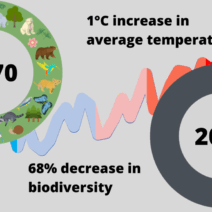In the grand tapestry of existence, how living organisms conserve matter and energy stands as a cornerstone of ecological sustainability. Conservation, in this context, transcends mere retention; it encompasses the intricate processes that allow living entities to utilize resources judiciously. Themes of efficiency, resilience, and interdependence unfurl as we delve into the myriad strategies employed by organisms, ranging from the tiniest bacteria to the most towering sequoias.
At the foundation of life’s conservation practices lies the principle of matter cycling. All living organisms are inextricably linked within complex ecosystems, wherein matter continuously flows through various forms and organisms. One of the most prominent examples is the carbon cycle, where carbon dioxide is absorbed by plants during photosynthesis, transforming sunlight into chemical energy. This energy is not merely discarded; it is stored in plant biomass and subsequently transferred through the food chain. Animals, in turn, utilize this stored energy for growth and reproduction, thus ensuring a perpetual cycle of matter and energy. This astute management underscores the significance of autotrophs—the primary producers in any ecosystem—whose photosynthetic prowess is foundational for energy conservation.
Equally critical is the nitrogen cycle, wherein nitrogen, a fundamental building block of life, is recycled through natural processes. Nitrogen-fixing bacteria in the soil convert atmospheric nitrogen into forms usable by plants, which are then consumed by herbivores. Through excretion and decomposition, nitrogen returns to the soil, thereby sustaining the cycle. This elegant process elucidates the synergy between biotic and abiotic components of ecosystems, showcasing the subtleties involved in matter conservation.
Another intriguing aspect of energy conservation emerges in the realm of metabolic rates. Different organisms exhibit varying metabolic strategies to optimize energy usage. Endothermic animals, such as mammals, maintain a constant body temperature and require a substantial energy input, particularly in colder environments. Conversely, ectothermic organisms, like reptiles, rely on external temperatures to regulate their body heat. This dichotomy highlights how energy conservation is context-dependent and influenced by environmental conditions. Adaptions—such as hibernation in mammals, torpor in birds, or estivation in some amphibians—exemplify responses that enhance energy efficiency during periods of inactivity or adverse conditions.
Furthermore, the concept of symbiosis illustrates how living systems conserve energy and matter through mutualistic relationships. Mycorrhizal fungi, for instance, form symbiotic associations with plant roots, extending their reach into the soil for nutrients and water in exchange for carbohydrates. Such relationships not only optimize resource utilization for both organisms but also enhance the resilience of plant species in nutrient-poor environments. This interconnectedness emphasizes the notion that conservation is not merely an individual endeavor, but rather a collective effort that bolsters ecosystem stability.
In addition to these cyclical processes and relationships, organisms have developed behavioral adaptations to mitigate energy expenditure. Camouflage in prey species serves as both a defense mechanism and a means of energy conservation. By remaining undetected, these organisms reduce the likelihood of predation, allowing them to conserve the energy that would otherwise be spent on evading threats. Likewise, migratory species embody energy conservation on a grand scale. By relocating seasonally, many birds and mammals exploit optimal conditions for foraging and reproduction, thus ensuring their survival while minimizing energy losses associated with unfavorable climates.
Moreover, plants exhibit fascinating strategies for conserving matter and energy through morphological adaptations. Xerophytes, like cacti, possess thick, waxy cuticles and specialized structures to minimize water loss, allowing them to thrive in arid environments. This efficient use of available water resources speaks to the broader principle of adaptation, wherein organisms evolve physiological traits that align with their ecological niches.
The conservation of energy is also notably evident in the realm of evolutionary biology. Natural selection favors traits that enhance energy efficiency, leading to the proliferation of organisms that have mastered the art of survival within their niches. This evolutionary perspective underscores that conservation is not a static achievement but rather an ongoing, dynamic process shaped by environmental changes and challenges.
A critical contemporary concern is the anthropogenic impact on these natural processes. Human activities, such as deforestation, pollution, and climate change, disrupt the intricate balance of ecosystems, jeopardizing their ability to conserve matter and energy effectively. As ecosystems become more fragmented, the interconnectedness that underpins conservation strategies is jeopardized, leading to the decline of biodiversity and the erosion of resilience. This highlights an urgent need for sustainable practices and responsible stewardship of natural resources.
In summation, the secrets of how living things conserve matter and energy unveil a complex interplay of biological principles, ecological relationships, and evolutionary strategies. From the nutrient cycling within ecosystems to the adaptive behaviors of species, conservation emerges as a fundamental theme in the tapestry of life. As humanity grapples with climate change and ecological degradation, understanding these natural processes becomes imperative for devising solutions that promote sustainability and harmony with our environment. The intricate strategies that organisms employ to conserve energy and matter not only embody the essence of life but also underscore our responsibility to protect and preserve the delicate balance of the natural world.








